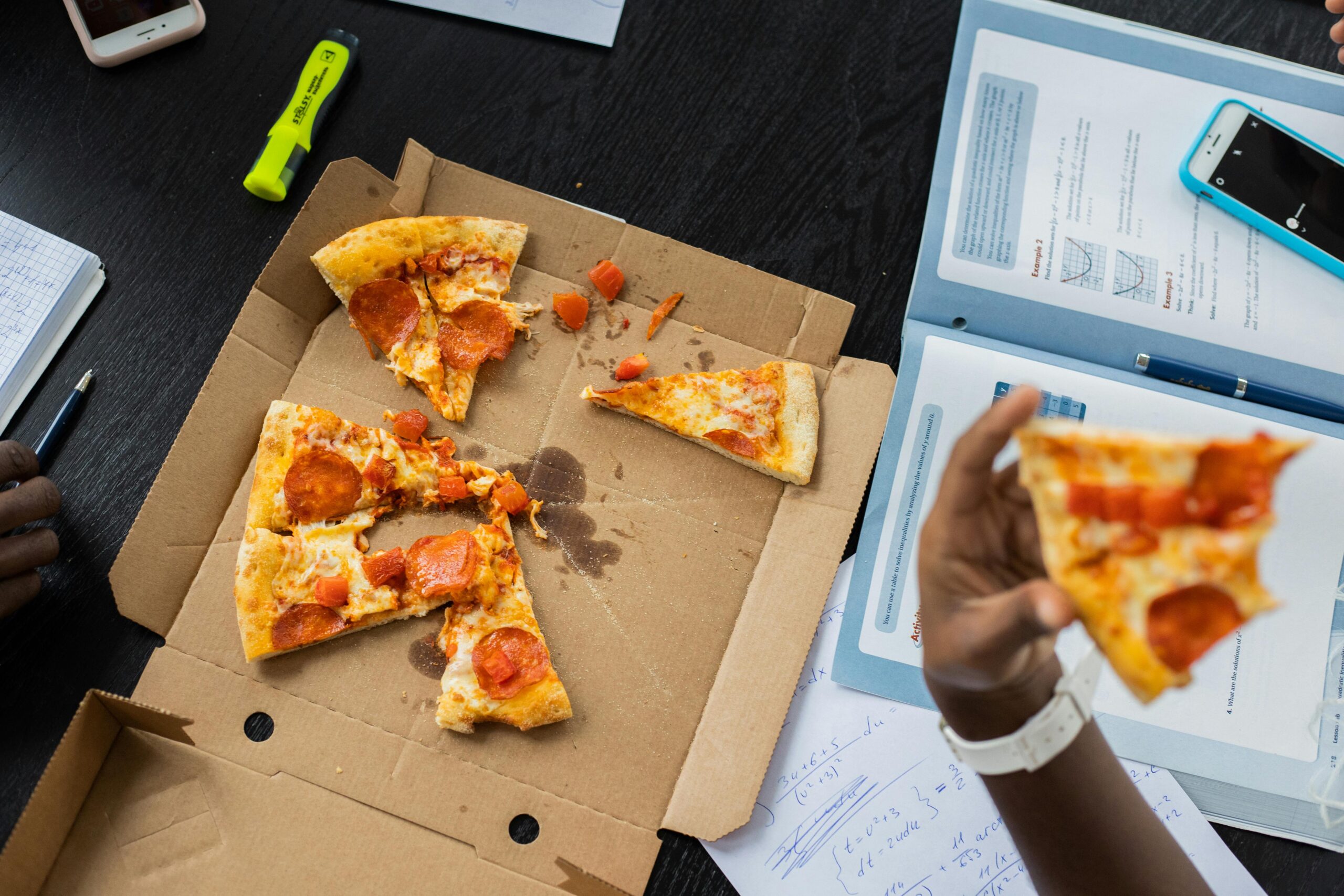Contents
Intro
Pizza lovers in Houston, get ready to experience a game-changing delivery service that will revolutionize your pizza-eating experience. A new robotic pizza delivery pilot program is set to hit the streets of Houston, making it the first city in the United States to test out this innovative technology. This means that you can soon have your favorite pizza delivered right to your doorstep by a cute, autonomous robot. No more waiting for a human delivery driver, no more worrying about cold pizza, and no more tipping. With this robotic pizza delivery pilot in Houston, convenience and efficiency are taken to a whole new level. Let’s dive into the details of this exciting new development and see how it will transform the way we order and receive our beloved pizzas in the bustling city of Houston.
Exploring the Robotic Pizza Delivery Pilot in Houston
The heart of this pioneering robotic pizza delivery pilot in Houston is a collaboration between cutting-edge technology companies and beloved local pizzerias. This initiative aims to blend the tradition of pizza-making with the latest in automation, offering a seamless delivery experience. Each participating restaurant prepares your favorite pies with the same care and passion but hands off the delivery process to a fleet of specially designed robots. These autonomous vehicles are equipped with state-of-the-art navigation systems, ensuring they find the fastest route to your door. Upon arrival, customers receive a notification and a unique code to unlock their pizza from the robot’s secure compartment, guaranteeing a hot and fresh delivery every time. This pilot program in Houston is not just a test of technological feasibility but also an exploration into how robotic delivery can integrate into and enhance the community’s dining habits. By prioritizing safety and efficiency, the program seeks to set a new standard for food delivery in Houston, Texas, and beyond, paving the way for a future where robotic delivery is a common sight in cities worldwide.
How Does Robotic Pizza Delivery Work?
The process of robotic pizza delivery in Houston is elegantly simple yet technologically advanced, designed to ensure maximum efficiency and customer satisfaction. Once a customer places a pizza order through an app or website, the order is received by the participating pizzeria where the pizza is freshly prepared. After the pizza is ready, it is securely placed in a compartment within the robot, known as the “Hyper Robotics Pizza” delivery vehicle. These robots are equipped with GPS and various sensors, enabling them to navigate sidewalks and crosswalks, and avoid obstacles while maintaining the optimal temperature to keep the pizza hot and fresh. Upon reaching the delivery destination, the customer is alerted via a notification on their smartphone. They are then provided with a unique one-time code, which they enter into the robot’s interface to unlock the compartment and retrieve their order. This process minimizes human contact, making it a safe and convenient option. The robots are monitored remotely to ensure safety throughout their journey and to assist with any unexpected situations that may arise. Through this innovative delivery system, Houston is setting the stage for a new era of food delivery that promises efficiency, safety, and the joy of receiving your pizza from a robotic companion.
Benefits of Robotic Pizza Delivery
The benefits of robotic pizza delivery in Houston are manifold, offering both immediate and long-term advantages to consumers, restaurants, and the broader community. Foremost, it enhances the customer experience by ensuring deliveries are not only prompt but also arrive at the perfect temperature, enhancing overall food quality. Additionally, this innovation significantly reduces the need for human delivery drivers, mitigating risks associated with road accidents and providing a contactless delivery option which is increasingly appreciated in today’s health-conscious environment. For local pizzerias, the adoption of robotic delivery means they can potentially lower operational costs associated with delivery logistics, allowing them to reallocate resources to further improve food quality or expand their services. Environmentally, these electrically powered robots contribute to reduced carbon emissions, aligning with broader sustainability goals. Lastly, this pilot program positions Houston as a leader in integrating cutting-edge technology into everyday life, showcasing a commitment to fostering innovation and improving urban living standards. The implementation of robotic pizza delivery stands as a testament to how technology can be harnessed to refine and redefine existing services for the betterment of society.
Challenges and Solutions
Implementing robotic pizza delivery in Houston is not without its challenges, from technical hurdles to public acceptance. One significant challenge is ensuring the robots can navigate complex urban environments safely. This includes accurately detecting obstacles, managing unpredictable weather conditions, and ensuring secure interactions with humans. Solutions involve advanced AI and machine learning algorithms that allow robots to learn and adapt to their surroundings, improving their navigation and decision-making capabilities over time. Another challenge is the potential resistance from the public, who may have concerns about job displacement for traditional delivery drivers and the safety of autonomous robots on city sidewalks. To address these concerns, companies involved in the pilot are engaging in community outreach to educate the public on the safety features of the robots, their environmental benefits, and how this technology can coexist with, rather than replace, human workers by creating new types of jobs in robot maintenance and fleet management. Lastly, regulatory hurdles present a challenge, as current laws did not anticipate the advent of autonomous delivery robots. Working closely with city officials and stakeholders to draft and refine regulations that ensure safety while encouraging innovation is critical for the success of robotic pizza delivery in Houston and its potential expansion to other cities.
Does Domino’s Have Delivery Robots?
Yes, Domino’s has embraced the innovative frontier of robotic delivery, signaling a significant shift towards a high-tech future in food delivery services. This move is part of Domino’s ongoing efforts to integrate cutting-edge technology into their operations, ensuring efficiency and convenience for their customers. The introduction of delivery robots represents a leap forward in Domino’s mission to revolutionize the way pizza is delivered. These autonomous vehicles are designed to navigate through streets and deliver orders directly to customers’ doors, promising a seamless and contactless delivery experience. The deployment of delivery robots not only highlights Domino’s commitment to innovation but also showcases the potential for technology to transform the fast-food industry. As Domino’s continues to experiment and expand its robotic delivery service, it sets a new standard for convenience and efficiency in food delivery, making it an exciting time for both the company and its customers. The future of robotic delivery at Domino’s looks promising, with plans to further refine the technology and potentially expand its use to more locations, paving the way for a new era of digital and automated service in the food industry.
Which Pizza Company Has Embraced Driverless Delivery?
As Domino’s Pizza pioneers driverless delivery in partnership with robotics companies like Nuro, we are standing on the brink of a transformative shift within the food industry. This innovative leap forwards could potentially set a new standard for convenience, efficiency, and safety in food delivery services. Imagine a world where the streets are dotted with autonomous vehicles, all smoothly delivering orders with precision and without the risk of human error or delay. This technological advancement is not merely about replacing human drivers with robots; it’s about reimagining the delivery ecosystem. It could lead to significant reductions in delivery times, ensuring that food arrives hotter, fresher, and faster. Furthermore, the decreased reliance on human labor for deliveries could also impact employment structures within the food industry, prompting a shift towards more tech-focused roles in maintaining and managing these autonomous delivery fleets. Moreover, the environmental implications could be substantial. With the potential for these driverless vehicles to be electric, we’re looking at a greener, more sustainable approach to delivery. This shift could catalyze a wider adoption of eco-friendly practices across the industry, further enhancing the appeal of food delivery services to a more environmentally conscious consumer base. In essence, Domino’s foray into driverless delivery could herald a new era for the food industry, one where technology, sustainability, and efficiency converge to redefine what it means to order in.
Why Did Zume Fail?
The downfall of Zume, once a promising startup blending robotics with pizza delivery, serves as a poignant lesson for burgeoning tech ventures. Primarily, Zume’s failure underscores the critical importance of market validation before scaling. The company’s ambitious expansion outpaced the genuine demand for its novel approach, highlighting the peril of scaling too rapidly without a proven, sustainable business model. Furthermore, Zume’s journey emphasizes the significance of adaptability and the need to pivot when necessary. Despite initial hype, the company struggled to adapt its business strategy in response to market feedback and operational challenges, ultimately leading to its downfall. Additionally, Zume’s experience sheds light on the complexities of integrating advanced technologies such as robotics into traditional industries. It’s not just about the technological innovation but also about how that technology can realistically enhance customer experience and operational efficiency. Lastly, Zume’s story is a cautionary tale about financial management. The startup’s heavy investment in technology and rapid expansion significantly drained its resources, demonstrating the dangers of unsustainable spending. These lessons from Zume’s failure are invaluable for any startup looking to innovate while avoiding similar pitfalls.


